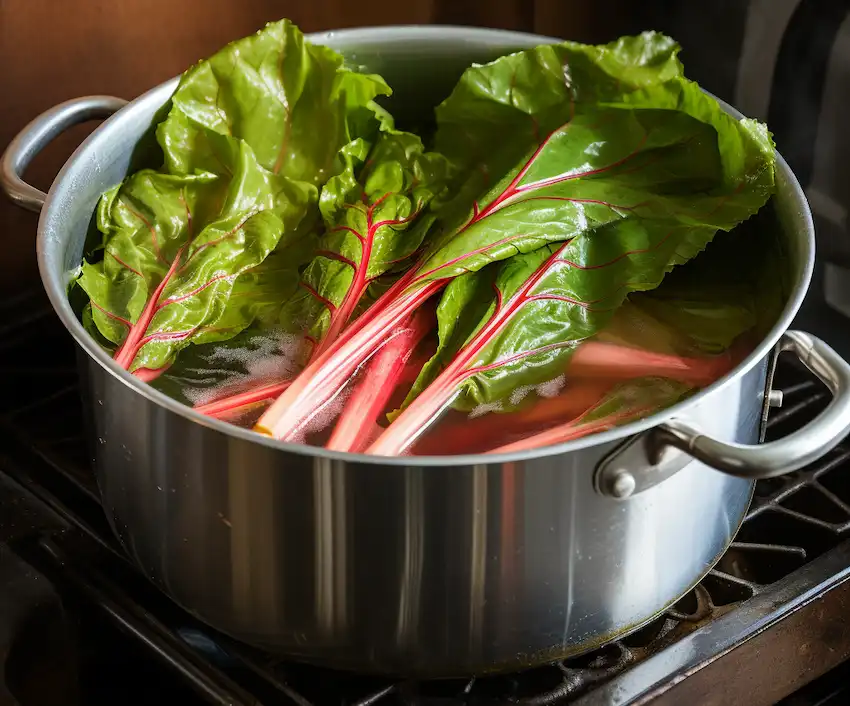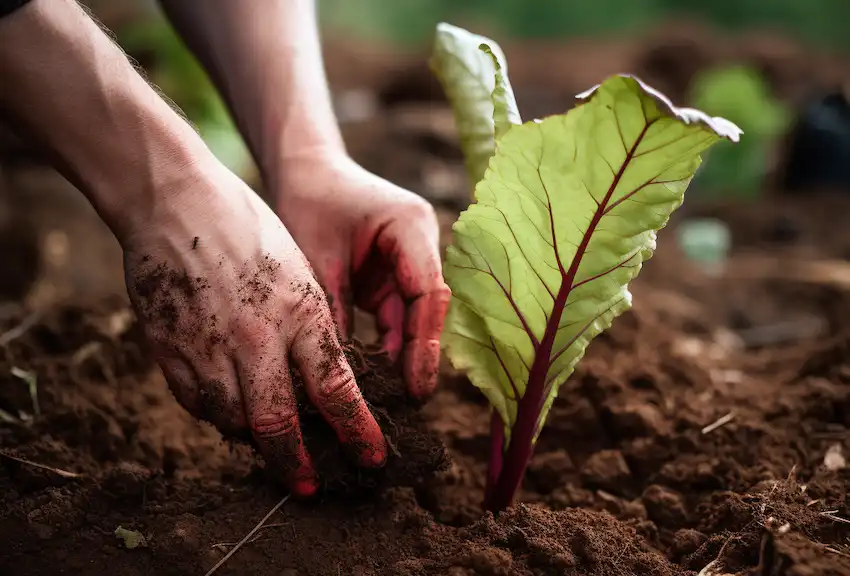6 Ways to Use Rhubarb Leaves Around the Home or Garden
Rhubarb is a plant appreciated for its tart, edible stalks, but its large leaves are often discarded due to their high oxalic acid content, which makes them inedible. However, these leaves can be resourcefully used around the home and garden. Here’s an exploration of how to utilize rhubarb leaves safely and effectively.
1. Natural Pest Repellent
Rhubarb leaves can be transformed into an effective organic pest repellent, especially useful against aphids and cabbage worms.
Steps:

- Boil Leaves: Simmer a few rhubarb leaves in water for about 20 minutes.
- Cool and Strain: Let the mixture cool and strain the liquid.
- Dilute and Spray: Dilute this with water (1 part rhubarb liquid to 3 parts water) and use it as a spray on affected plants.
2. Compost Accelerator
The high nitrogen content in rhubarb leaves makes them a great addition to your compost pile, helping to accelerate the decomposition process.
Steps:
- Chop Leaves: Cut the leaves into smaller pieces.
- Mix with Compost: Add these pieces to your compost bin, balancing with carbon-rich materials like dry leaves or newspaper.
3. Weed Control Mulch
Rhubarb leaves can act as a biodegradable mulch to suppress weeds.
Steps:
- Spread Leaves: Lay whole or chopped rhubarb leaves around plants.
- Water: Ensure to water the leaves to help them break down and form a barrier against weeds.
4. Cleaning Agent for Pots and Pans
The acidic nature of rhubarb leaves can help remove stubborn burnt residue on pots and pans.
Steps:
- Boil Leaves in Pot: Place a few leaves in the pot with water and boil.
- Scrub: After boiling for a few minutes, use the mixture to scrub the pot.
5. Natural Dye
Rhubarb leaves can be used to create a natural dye for fabrics or crafts.
Steps:
- Boil Leaves: Simmer the leaves in water to extract the dye.
- Strain and Use: Strain the liquid and use it as a dye for fabrics or in craft projects.
6. Plant Health Check

The quick decomposition of rhubarb leaves can indicate the health of your soil.
Steps:
- Observe Decomposition: Place a leaf in the soil and monitor its decomposition rate. Faster breakdown can indicate healthy soil microbial activity.
Safety Precautions
While using rhubarb leaves, it’s important to remember that they contain oxalic acid, which can be toxic if ingested. Always use gloves when handling and never use them in a way where they could be ingested by humans or animals.
Rhubarb leaves, often discarded as waste, can find multiple uses around the home and garden. From being a natural pest repellent to a compost accelerator, these leaves offer eco-friendly solutions, helping you embrace sustainability in everyday life. Remember to handle them with care due to their toxic nature. With these innovative uses, rhubarb leaves can become an invaluable resource for any gardener or homeowner.



















